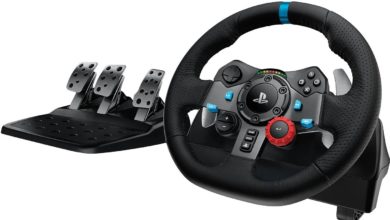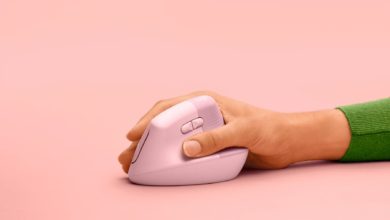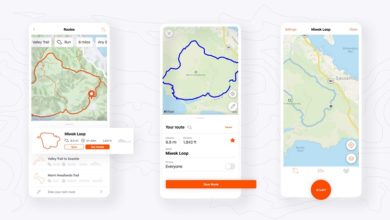HTC 10 officially announced for $699
HTC has officially announced the HTC 10, its flagship smartphone for 2016. A YouTube video was released to reveal the device. It will be available in Glacier Silver and Carbon Grey. HTC has said that the handset will start shipping in May and will come with HTC’s Uh Oh Protection, which will offer users one replacement at no charge within the first 12 months for a cracked screen or water damage.
The HTC 10 is powered by the latest Snapdragon 820 and Adreno 530. The device comes with 4 GB of RAM and 32/64 GB internal storage which can be further expanded up to 2 TB via microSD. The HTC 10 features a 5.2-inch Quad HD (1440×2560 pixels) Super LCD 5 display with a pixel density of 564ppi and it sports a curved edge Gorilla Glass.
It comes with Android 6.0 Marshmallow with HTC Sense skinned on top. The HTC 10 sports a 12-megapixel laser autofocus camera with dual tone LED flash, BSI sensor, optical image stabilisation, f/1.8 aperture and Sapphire Lensimary. HTC’s Ultrapixel technology allows it to capture high quality images even when zooming in. There is a 5-megapixel front-facing camera which features autofocus, optical image stabilisation and auto selfie.
The device comes with BoomSound tech that comes with Dolby Audio and three microphones with noise cancellation. The device is powered by a 3000mAh battery which is supposed allows talk time of up to 21 hours on 3G networks and a standby time of up to 21 days on 3G.
The HTC 10 also supports Quick Charge 3.0 with cool charge technology which ensures better thermal management. Connectivity options include NFC, Bluetooth 4.2, dual-band Wi-Fi 802.11 a/b/g/n/ac, GPRS/ EDGE, 3G, and 4G.
HTC 10 Specification
General
| Price | 700$ |
| Announced | 12 April, 2016 |
| Released | 12 April, 2016 |
| Status | Available |
Display
| Display Type <strong>Display Technology => </strong> A number of display technologies and types used in mobile phones => TFT (Thin Film Transistor), IPS (In-Place Switching), OLED (Organic Light Emitting Diode), AMOLED (Active-Matrix Organic Light-Emitting Diode), Super AMOLED (an even advanced version of AMOLED), Resistive Touchscreen (Resistive touchscreens contain two layer of conductive material with a very small gap between them which acts as a resistance), Capacitive Touchsceen (Capacitive touchscreen technology consists of a layer of glass coated with a transparent conductor) | Super LCD 5 |
| Size | 5.2 |
| Resolution | 1440 x 2560 |
| Pixel Density <strong>Pixel Density (PPI)</strong> is refers to the concentration of pixels on a particular display, measured in pixels per inch (ppi). Pixel density is calculated by dividing the diagonal pixel resolution of a display by its diagonal size, higher pixel density better display quality. | 564ppi |
| Display Protection <strong>Display Protection => </strong> Gorilla Glass is a special alkali-aluminosilicate glass shield with exceptional damage resistance that helps protect mobile displays from scratches, drops, and bumps of everyday use, It is always better to go for a smartphone with Gorilla Glass for that added protection and peace of mind. | Gorilla Glass 4 |
| Features | Display color personalization |
Hardware
| Chipset <strong>Chipset</strong> is a group of integrated circuits designed to perform one or a more dedicated functions, often with real time computing constraints, Popular smartphones are equipped with more advanced embedded chipsets that can do many different tasks depending on their programming. | Qualcomm MSM8996 Snapdragon 820 |
| CPU <strong>CPU</strong> (Central Processing Unit) mostly known as processors, CPU processes instructions in order to carry out certain functions that make your device operate properly. Processors are often described as the brain of computers, smartphones and tablets, Smartphones and tablets rely on processors to carry out their every task, Processors are an incredibly important factor in selecting any type of computing device, including your smartphone. | 2x 2.2 GHz + 4x 1.6GHz |
| GPU <strong>GPU</strong> (Graphics Processing Unit) is a single-chip processor designed to rapidly manipulate and alter memory to accelerate the creation of images in a frame buffer intended for output to a display, This includes things such as lighting effects, object transformations, and 3D motion. | Adreno 530 |
| RAM (Memory) <strong>RAM</strong> (Random Access Memory) is a type of computer memory that can be accessed randomly, any byte of memory can be accessed without touching the preceding bytes that allows information to be stored and accessed quickly from random locations. RAM is the most common type of memory found in computer systems, smartphones, tablets and other electronic devices. | 4GB |
| Internal Storage <strong>Internal Storage</strong> is a data storage space (flash memory) mostly used in smartphones, tablets and other electronic devices where operating system, apps, music, photos, videos, files and other user data Is stored. | 32GB |
| Card Slot <strong>Memory Card Slot</strong> is a special slot for inserting a memory card. Memory cards allow you to expand the phone's built-in memory, A memory card (sometimes called a flash memory card or a storage card) is a small storage medium used to store data such as text, pictures, audio, and video, for use on small, portable or remote computing devices such as mobile phones, mp3 players, digital cameras. | Yes |
| Sensors <strong>Sensors</strong> are electronic components that detects and responds to some type of input from the physical environment. The specific input could be light, heat, motion, moisture, pressure and location, The output is generally a signal that is converted to use in computing systems, a location sensor, such as a GPS receiver is able to detect current location of your electronic device. |
Ambient light sensor Proximity sensor Motion G-sensor Compass sensor Gyro sensor Magnetic sensor Fingerprint sensor Sensor Hub |
Battery
| Battery Type <strong>Battery Type => </strong> Cell phones run on various kinds of batteries depending on the manufacturer, phone size or shape and features. There are basically four types of cell phone batteries => Lithium Polymer, Lithium Ion, Nickel Metal Hydride and Nickel Cadmium. | Li-Ion (Lithium Ion) |
| Capacity <strong>Battery Capacity</strong> is a measure (typically in Amp-hr) of the charge stored by the battery, and is determined by the mass of active material contained in the battery. The battery capacity represents the maximum amount of energy that can be extracted from the battery under certain conditions. | 3000mAh |
| Standby <strong>Standby Time</strong> is the total amount of time that you can leave your is fully charged, turned on and ready to send and receive calls or data transmissions before completely discharging the battery. | up to 19 days |
| Talk Time <strong>Talk Time</strong> is the longest time that a single battery charge will last when you are constantly talking on the phone under perfect conditions, Ambient temperature and highly dependent on the cellular network environment such as the distance to the closest cell network tower. | up to 27 hours on 3G/4G |
| Fast Charging | Quick Charge 3.0, 50% in 30 minutes |
Camera
| Primary <strong>Camera</strong> is able to capture photographs and usually videos, The most important characteristics of a camera are the resolution (measured in megapixels), lens focus type (fixed or automatic), higher megapixel cameras are known to capture higher quality photos, but not always a good measurement of the photos quality. | 12mp |
| Camera Features |
Laser Autofocus BSI sensor Optical Image Stabilisation (OIS) ƒ/1.8 aperture and 26mm focal length (80° wide angle) Pro mode with manual control and 12 bit RAW format support Continuous shooting up to 8 fps Zoe capture Hyperlapse |
| Secondary | 5mp with OIS, f/1.8 aperture, 1080p video, HDR |
| Video | Slow motion video (720P@120 fps) ; 4K video recording with Hi-Res audio |
| Flash <strong>Flash Light => </strong> There is commonly two types of flash lights are used in camera mobile phones, LED Flash (LED flash offers lower power consumption with drive circuitry that takes up very little room, LEDs can be strobed faster than any other light source), Xenon Flash (xenon flash produces an extremely intense full-spectrum white light for a very short duration) | Dual Tone |
Design
| Type <strong>Design Type</strong> called form factor refers to a mobile phone's size, shape, and style as well as the layout and position of major components of phone. There are three major form factors seen in mobile phones => bar phones, folding phones and sliding phones. | Bar |
| Dimensions | 145.9 x 71.9 x 3.0 - 9.0 mm |
| Weight | 161 grams |
| Protection |
Aluminum Unibody Curve edge Gorilla Glass |
| Colors | Gray, Silver |
Network
| SIM <strong>SIM</strong> (Subscriber Identity Module) is a small card that contains mobile network subscriber's account information. This allows the phone using the card to attach to a mobile network. The SIM card is most commonly associated with GSM and UMTS mobile networks. Moving a SIM card from one phone to another allows a subscriber to switch mobile phones without having to contact their mobile network carrier. SIM cards can also be used by a phone to store limited amounts of data, such as phone numbers and text messages. | Nano SIM |
| Dual SIM | No |
| 2G Network | 850/900/1800/1900 MHz |
| 3G Network | 850/AWS/900/1900/2100 MHz |
| 4G Network |
FDD: Bands 1, 2, 3, 4, 5, 7, 12, 13, 17, 20, 28, 29, 30 Support Cat 9 LTE, download up to 450 Mbps, upload up to 50 Mbps |
Software
| Operating System <strong>OS => </strong> Every computer system run on a base software called Operating System (OS). Operating System controls all basic operations of the computer (such as smartphone, PDAs, tablet computers and other handheld devices). The Operating System allows the user to install and run third party applications (apps), apps are used to add new functionality to the device. | Android 6.0 marshmallow |
| User Interface <strong>UI</strong> or user interface of a device is the look and feel of the on-screen menu system. How it works, its color scheme, how it responds to button presses, all of these things are part of the user interface. | HTC Sense UI |
Connectivity
| Bluetooth <strong>Bluetooth</strong> is a wireless communications technology for exchanging data between mobile phones, headsets, computers and other network devices over short distances without wires, Bluetooth technology was primarily designed to support simple wireless networking of personal consumer devices. | v4.1 |
| Infrared <strong>Infrared</strong> connectivity is an old wireless technology used to connect two electronic devices. It uses a beam of infrared light to transmit information and so requires direct line of sight and operates only at close range. | |
| Wi-fi <strong>Wi-Fi</strong> is a popular wireless networking technology using radio waves to provide high-speed network connections that allows devices to communicate without cords or cables, Wi-Fi is increasingly becoming the preferred mode of internet connectivity all over the world. | 802.11b/g/n/ac |
| USB | v3.1 Type-C |
| GPS <strong>GPS</strong> The Global Positioning System is a satellite-based radio navigation system, GPS permits users to determine their position, velocity and the time 24 hours a day, in all weather, anywhere in the world, In order to locate your position, your device or GPS receiver must have a clear view of the sky. | yes |
| NFC <strong>NFC</strong> (Near field communication) is a set of standards for smartphones and similar devices to establish peer-to-peer radio communications with each other by touching them together or bringing them into proximity, usually no more than a few inches. |




